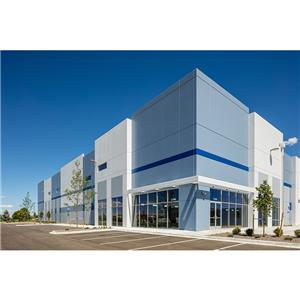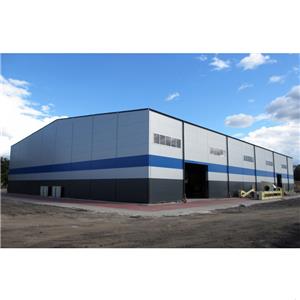Foundation construction of Lanying new factory
Steel Structure Foundation Construction
Steel structures are widely used in modern construction due to their strength, durability, and versatility.
Proper foundation construction is crucial to ensure the stability and long
evity of steel buildings.
In this article, we’ll discuss key aspects of steel structure foundation construction.
1. Site Preparation
Before starting the foundation work, thorough site preparation is essential. This includes clearing the area,
leveling the ground, and removing any debris or vegetation.
Proper drainage should also be considered to prevent water accumulation around the foundation.
2. Types of Steel Structure Foundations
a. Shallow Foundations
Shallow foundations are commonly used for steel structures. These include:
Spread Footings: Spread footings distribute the load from columns or walls to a wider area of soil.
They are suitable for smaller buildings and light loads.
Mat Foundations (Raft Foundations): Mat foundations cover the entire building footprint.
They are ideal for large structures and heavy loads, as they evenly distribute the weight.
b. Deep Foundations
Deep foundations are used when the soil near the surface is not stable enough to support the structure.
Common types include:
Pile Foundations: Steel piles are driven into the ground to transfer the load to deeper, more stable soil layers.
Different types of piles (e.g., driven piles, drilled piles) can be used based on soil conditions.
Caissons: Caissons are large-diameter drilled shafts that extend deep into the ground.
They provide support for tall or heavy structures.
3. Foundation Design
The foundation design considers factors such as soil type, load-bearing capacity, seismic conditions,
and building height.
Engineers analyze soil tests and perform structural calculations to determine the appropriate foundation type and dimensions.
4. Construction Process
a. Excavation and Formwork
Excavate the foundation area to the required depth. Install formwork to shape the foundation.
Reinforcement bars (rebars) are placed within the formwork to provide additional strength.
b. Concrete Pouring
Pour concrete into the formwork, ensuring proper compaction. Vibrators may be used to eliminate air pockets.
For mat foundations, the entire area is poured simultaneously.
c. Curing and Setting Time
Allow the concrete to cure and gain strength.
Follow recommended curing practices to prevent cracks and ensure durability.
d. Column Anchorage
Anchor bolts are embedded in the concrete to secure steel columns.
Proper alignment and positioning are critical.
5. Quality Control and Inspection
Regular inspections during construction are essential.
Inspectors check for proper reinforcement placement, concrete quality, and adherence to design specifications.
6. Conclusion
A well-constructed foundation is the backbone of any steel structure.
By following best practices and adhering to engineering guidelines,
builders can ensure the safety and stability of steel buildings.
Remember that local building codes and regulations may vary,
so consult with a qualified structural engineer or construction professional for specific guidance.




